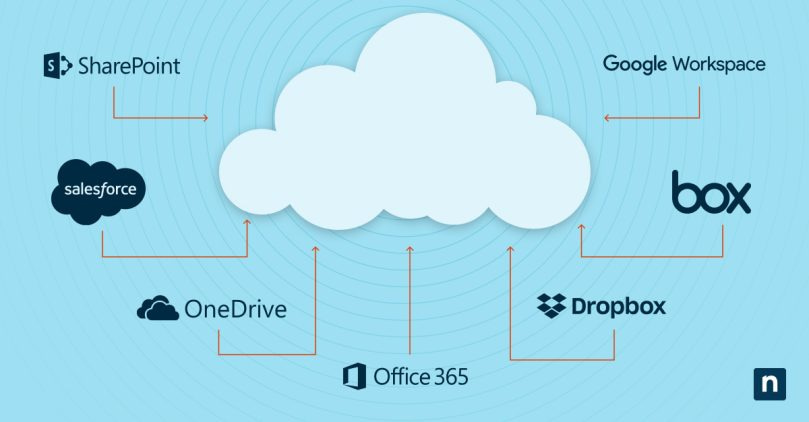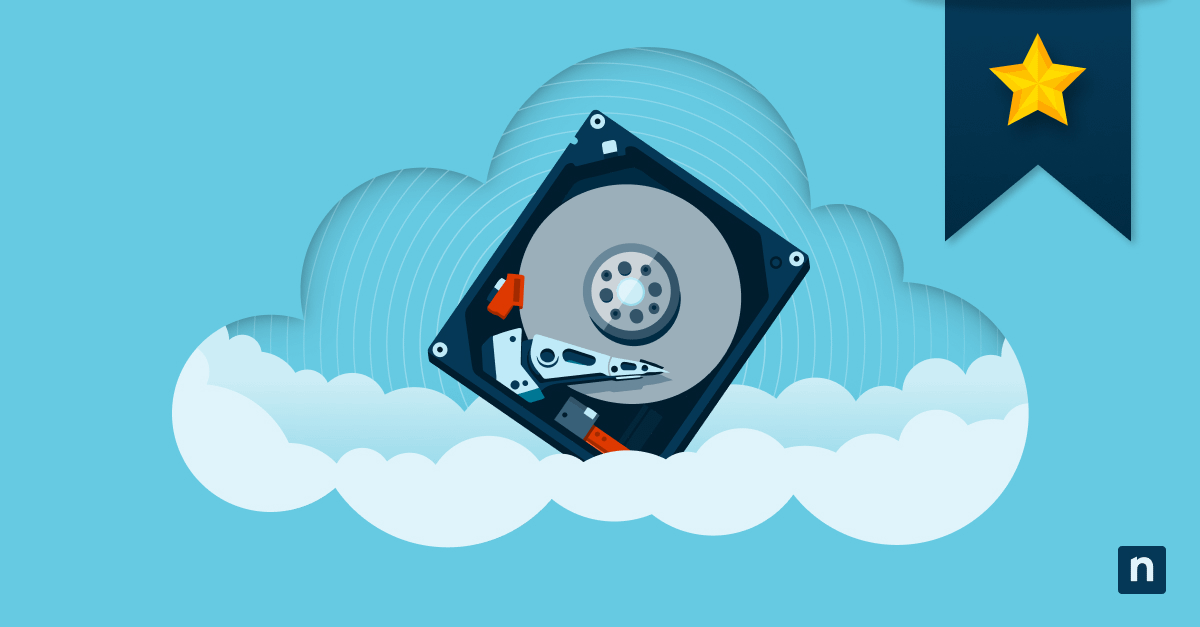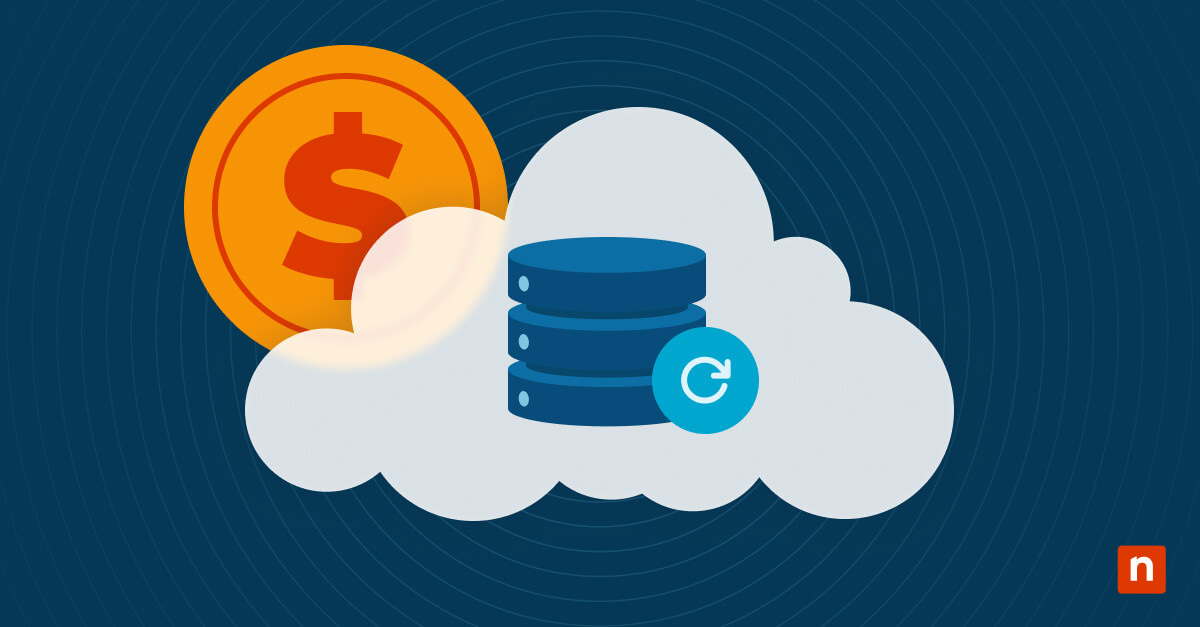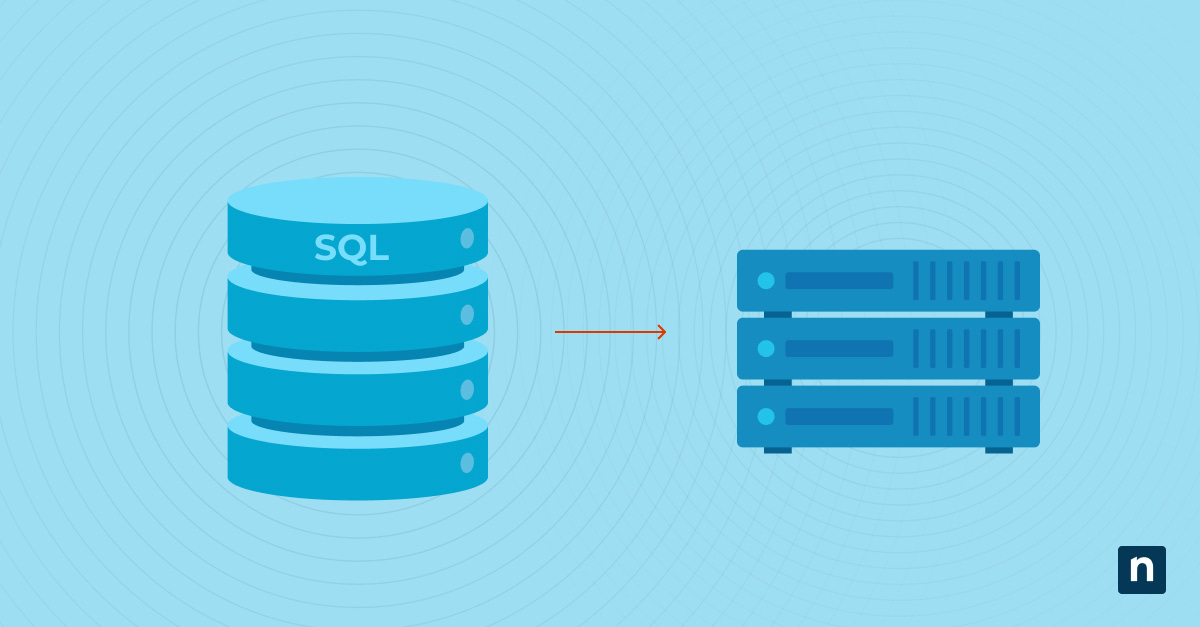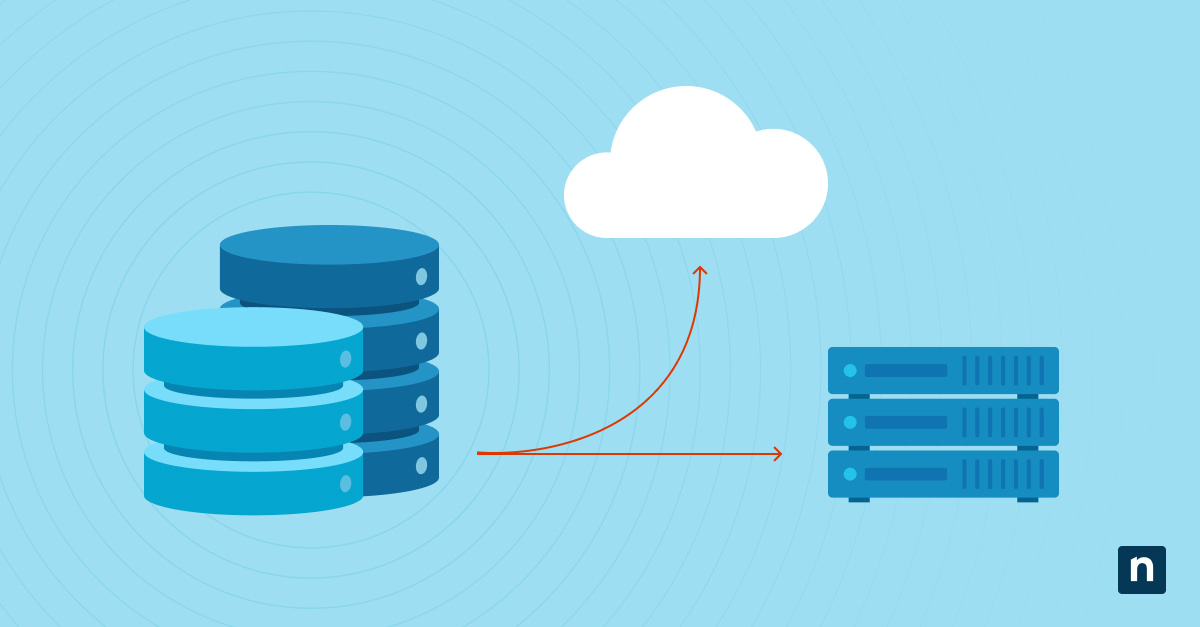The cloud is integral to many organizations, and a substantial number regularly use SaaS applications during daily business operations. However, not all organizations have implemented backups, which can create problems such as accidental deletion, security incidents, or hardware failure.
SaaS providers do not solve these problems, so the best and easiest way to protect your organization from downtime and losses is to implement SaaS Backup. With a reliable backup solution, you can keep your company running smoothly while ensuring that you have the time and peace of mind to focus on other objectives. If you have a disaster recovery plan, SaaS Backup should be part of it.
What is Software-as-a-Service (SaaS)?
If you use software and applications that are based in the cloud, you have used Software-as-a-Service (SaaS). Typically offered as a subscription, SaaS works by selling licenses and allowing users access to applications that are hosted on web-accessible servers. The host company is responsible for infrastructure, maintenance, and updates to the software, leaving you free to utilize the application without requiring installation, repairs, or troubleshooting.
What is SaaS backup?
SaaS Backup is a data duplication and storage service hosted in the cloud by another company. Rather than relying on local devices to store all your data that you create with traditional software, you pay for a cloud backup service that backs up the data you create while using cloud-based software, such as Microsoft365 or Google Workspace.
Typically, the data is stored on a public cloud, but an on-premises server solution is also possible. However, a critical advantage of storing your data in the cloud is that any disaster that occurs at your organization’s location will not affect your backups. For example, if your backups are stored on an on-premise server during a flood, you will lose your backups. SaaS Backups on the cloud store multiple copies of your data on multiple servers, reducing the risk of unexpected loss.
Although organizations often assume that SaaS providers automatically back up the data created on their platforms, this is generally not the case. Microsoft does not keep extra copies of your Excel sheets on their servers, so any data accidentally or maliciously deleted are not recoverable. So, if you’re using SaaS applications, SaaS Backup is a separate but essential tool.
The importance of SaaS backup
As organizations increasingly rely on SaaS providers for daily business operations, having a SaaS Backup is needed to prevent security incidents or disasters from crippling operations. Because SaaS providers do not protect users from themselves, it behooves organizations to implement automated, consistent backups that can be used to restore unintentionally or maliciously deleted data.
What are the benefits of SaaS backup?
SaaS providers are not obligated to ensure your data’s integrity. Taking responsibility for your own data is essential to both your daily operations and your organization’s longevity, and there are several critical advantages to having a SaaS Backup solution in place.
- Duplicate data: Regularly updated SaaS Backups ensure that you’ll have additional copies of your data in case of accidental deletion, data corruption, or system failure. Even if your hardware becomes damaged or nonfunctional, duplicate copies of your data can be accessed online from any machine, making recovery relatively fast and simple.
- Simplified and automated backup processes: Good SaaS Backup solutions will be automated, allowing you to focus on your more demanding projects. Instead of adding backups to your to-do list, the SaaS Backups take care of themselves.
- Scalability and flexibility in managing data growth: With virtually unlimited space, SaaS Backup providers can accommodate your company’s growing needs over time, and although you may have to pay higher rates for more storage, these costs will be predictable and consistent. Paying for more space can be more cost-effective than buying more of your own hardware to use for backups.
- Attack mitigation: If you suffer a ransomware attack, for example, being able to access backups online can help you avoid paying a ransom and restore operations quickly. If an attacker encrypts your data, you have a reliable recourse.
- Assurance of business continuity and reduced downtime: If you’ve ever worked up a contract for a new customer or client, created a stack of invoices, or any similar project, you can imagine the horrible feeling that you’d get if you shut down the application without saving. It’s much worse when a substantial amount of data is lost. SaaS Backups ensure that all of your client or customer information, projects, and other data can be recovered quickly in the event of an incident or disaster, ensuring that you’ll have all your information and keep your company’s downtime as short as possible.
Data backup and recovery best practices
SaaS Backups require less direct intervention than manual backups to on-site hardware, but that doesn’t mean you can be completely hands-off. You will still need to strategize and implement SaaS Backup best practices.
RTO and RPO
Reducing downtime is one of the most important benefits of SaaS Backup. If your organization loses or can’t access the data, you won’t be able to serve clients or customers, and there is a limited amount of time that they’ll be willing to wait. There are two downtime metrics that every business should track: Recovery Time Objective (RTO) and Recovery Point Objective (RPO). RTO indicates the amount of time you have to recover from data loss before your business begins to be affected, and RPO indicates the amount of data that can be lost within a given period before a business is affected.
Both of these metrics are measured in time; RTO is the total tolerable downtime, and RPO is the maximum time between the last full backup and the loss. When you create your organization’s recovery strategy, you’ll want to consider both of these.
Part of your recovery strategy will be how frequently your backups are scheduled and how long you retain old copies of data. For example, if you work in a very fast-paced environment and your RPO is 24 hours, you should schedule a full backup at least once per day. It’s also beneficial to test your restoration while creating your recovery plan. Perform a full restoration to find out how long it will take, and consider that time in context of your RTO.
Recovery Best Practices
To further improve your recovery plan, consider the following best practices.
- Regular monitoring: There’s always room for improvement, so be sure to regularly assess your backup and restoration strategies to ensure that you have optimized them.
- Frequent testing: You should test your backups regularly, and if there are failures, address them promptly so that your organization isn’t caught unprepared by a disaster.
- Redundant storage: For maximum effectiveness of your SaaS Backup solution, always plan to have at least two backup copies of your data stored in two separate locations.
Backup security and compliance strategies
Just as they are not responsible for your backups, SaaS companies are not responsible for your data’s security. This applies to SaaS Backup providers as well; they will take steps to secure their own servers, but storing data in the cloud comes with the disadvantage of a very wide attack surface on your end.
To ensure data security during backup transmission and storage, invest in access controls, firewalls, and automated monitoring. Especially as data privacy laws become more stringent, it’s important to keep data in the right hands, which necessitates data encryption and other security measures. Finally, audit your organization’s processes frequently to ensure that all security protocols are being followed consistently.
Cloud backup vs. backup for cloud applications
One thing to remember when looking into backup tools is that there’s a difference between cloud backup and backup for cloud-based applications, which is SaaS Backup. Cloud backup allows organizations to back up data from their files and endpoints to the cloud, which ensures its safety even if a physical disaster occurs. Backup for cloud-based applications, or SaaS Backup, allows organizations to back up data from their cloud-based applications, such as Microsoft365. So, although these two are similar terms, they have completely different meanings.
If you are looking for cloud backup solutions, NinjaOne can help organizations improve their security, compliance, and disaster recovery prospects through its Cloud Backup solution. This backup solution can help you meet RTO and RPO objectives through fast, easy data restoration, and both hybrid and cloud-based options are available. One of NinjaOne’s SaaS Backup perks is its self-service function, which allows individual users to restore their own accidentally deleted files. Additionally, it will monitor your environment automatically and send you alerts when there is unusual activity.
Protect your data with SaaS Backup
If you’re using SaaS applications, you should have a SaaS Backup solution to ensure that your data is safe and accessible. Disasters happen to businesses every day, but you can protect yourself from the negative impacts of excessive downtime if you have robust, effective backup solutions incorporated into your recovery plan.

